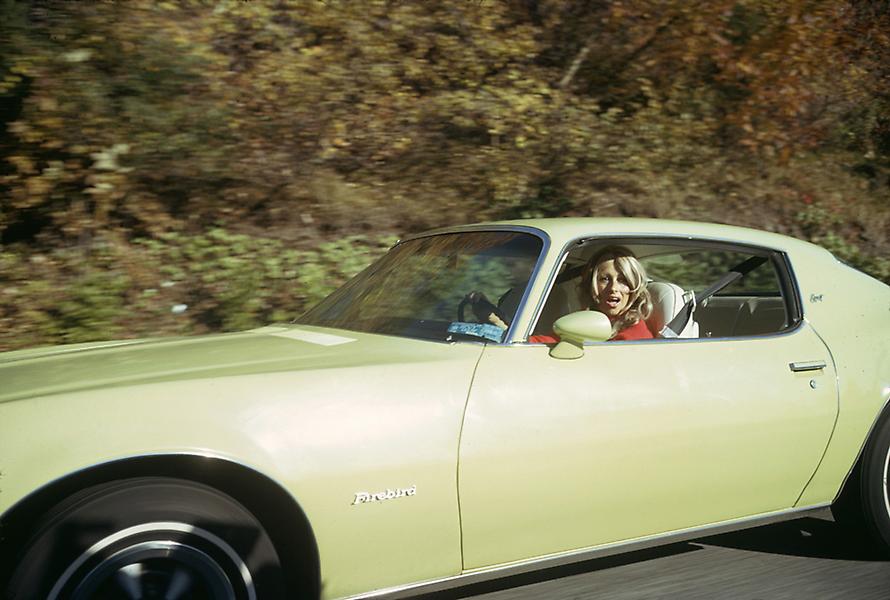No Longer Lickable
With Steve Jobs gone, Apple no longer makes lickable buttons. Sorry.


Apple nav bars compiled by James Dempsey
via Quipsologies
With Steve Jobs gone, Apple no longer makes lickable buttons. Sorry.


Apple nav bars compiled by James Dempsey
via Quipsologies
Robert Zemeckis is not down with anyone remaking Back to the Future:
“I mean, to me, that’s outrageous. Especially since it’s a good movie. It’s like saying ‘Let’s remake Citizen Kane. Who are we going to get to play Kane?’ What folly, what insanity is that? Why would anyone do that?”
Hahaha. Take it easy, Zemecky.
I liked Back to the Future like anyone else, but it ain’t no Citizen Kane.
Talk about delusions of grandeur.
This week Michael and Bryan discuss the summer, hearing loss, brown noise, ten years of podcasting in iTunes, Cavs-vs-Warriors, stadiums & cities, OS X El Capitan, edits on DailyExhaust.com, martinis & breasts, the Confederate Flag, and the power of symbols.

via vintage everyday
Moore’s Law keeps going. Some experts say it will eventually be impossible to keep doubling every 18 months. Even if that happens, one thing we know is that this wouldn’t matter as much as it might have before. With the ubiquity of smartphones, powerful computing technology is now in the hands of the masses. The “computer for the rest of us” that the advertisements for the Macintosh had promised since 1984 has arrived. And that’s why Moore’s Law is no longer enough to make customers happy.
—John Maeda, Why Design Matters More than Moore
No shit, the original Moleskin launched in 1997?
The Moleskine notebook emerged at a moment when it looked increasingly like the long-promised “paperless office” would become a reality, with technologies like word-processing software, the Internet, laptops, handheld devices, and other innovations rendering printed matter obsolete. The original Moleskine journal was launched in Milan, in 1997, the same year the first Palm digital planner was introduced; its designer, Maria Sebregondi, told me that she was aiming to create the ultimate travel journal for an emerging class of “global nomads.” But, within a few years, the notebook had been adopted by a totally different class of user: M.I.T. students and academics, tech-company founders, and other high-achieving entrepreneurs, all of whom prized it for its simplicity and efficiency.
I thought the Moleskin was much older than that.
John Biggs sees the tipping point for self-publishing coming soon:
I’ve gone all in with the Indie publishing movement – I’ve released three books myself and I’ve done relatively well with all of them. But the fact still remains that the entire business of books is stacked against the Indie author. While the tools are far simpler than they have ever been, the perception that an Indie book is an inferior product, at least in the eyes of established media, is strong. But that’s about to change.
Progress has been made, but there’s still more work to be done.
Yes, Dylann Roof is racist, but where does this racism come from?
David Niose says anti-intellectualism:
And even though it may seem counter-intuitive, anti-intellectualism has little to do with intelligence. We know little about the raw intellectual abilities of Dylann Roof, but we do know that he is an ignorant racist who willfully allowed irrational hatred of an entire demographic to dictate his actions. Whatever his IQ, to some extent he is a product of a culture driven by fear and emotion, not rational thinking, and his actions reflect the paranoid mentality of one who fails to grasp basic notions of what it means to be human.
What Americans rarely acknowledge is that many of their social problems are rooted in the rejection of critical thinking or, conversely, the glorification of the emotional and irrational. What else could explain the hyper-patriotism (link is external) that has many accepting an outlandish notion that America is far superior to the rest of the world? Love of one’s country is fine, but many Americans seem to honestly believe that their country both invented and perfected the idea of freedom, that the quality of life here far surpasses everywhere else in the world.
The whole article is worth a read.
This is the privilege of whiteness: While a terrorist may be white, his violence is never based in his whiteness. A white terrorist has unique, complicated motives that we will never comprehend. He can be a disturbed loner or a monster. He is either mentally ill or pure evil. The white terrorist exists solely as a dyad of extremes: Either he is humanized to the point of sympathy or he is so monstrous that he almost becomes mythological. Either way, he is never indicative of anything larger about whiteness, nor is he ever a garden-variety racist. He represents nothing but himself. A white terrorist is anything that frames him as an anomaly and separates him from the long, storied history of white terrorism.
I’m always struck by this hesitance not only to name white terrorism but to name whiteness itself during acts of racial violence. In a recent New York Times article on the history of lynching, the victims are repeatedly described as black. Not once, however, are the violent actors described as they are: white. Instead, the white lynch mobs are simply described as “a group of men” or “a mob.” In an article about racial violence, this erasure of whiteness is absurd. The race of the victims is relevant, but somehow the race of the killers is incidental. If we’re willing to admit that race is a reason blacks were lynched, why are we unwilling to admit that race is a reason whites lynched them?
In his remarks following the Charleston shooting, President Obama mentioned whiteness only once — in a quotation from the Rev. Dr. Martin Luther King Jr. intended to encourage interracial harmony. Obama vaguely acknowledged that “this is not the first time that black churches have been attacked” but declined to state who has attacked these churches. His passive language echoes this strange vagueness, a reluctance to even name white terrorism, as if black churches have been attacked by some disembodied force, not real people motivated by a racist ideology whose roots stretch past the founding of this country.
—White Terrorism Is as Old as America
via The Made Shop
After raising $1 million, the super-thin CST-01 watch won’t make it to Kickstarter backers:
Nearly two years after “the world’s thinnest watch” was supposed to arrive to Kickstarter backers, the project has announced that it’s pretty much done for. It’s a disappointing update in the long saga of the $1 million campaign for CST-01, what was once supposed to be a stylish, 0.80mm-thick E Ink bracelet that displayed the time. The CST-01 project has been detailing its troubles for a few months now, but last week it informed backers that it no longer expects to fill all preorders or to find another company to take over production. It now expects to either liquidate all remaining assets or, if unable to find buyers, open up all designs and distribute and sell off as many remaining parts as it can.
After funding two Kickstarter projects (here and here) I can tell you these are the most important things to remember:
I had to do a lot of preparation before I launched my most recent Kickstarter project. See, getting the money is the easy part. It really is. I’m not saying that because I think money isn’t important. If you produce a great video about a great product idea with great photography and desirable reward tiers, that money will come rolling in.
The catch is, once that pile of money comes in, you have to make it last. You would do best to address all the bullet points above once, twice—shit, make it three times.
I was only dealing with paper and ink with my projects. Producing e-ink watch bands is a whole other world.

—David Sedaris, Lets Explore Diabetes With Owls